Device and Data Security in the Embedded Systems
Embedded systems are at the core of our modern-age technology, powering everything from smart electronic devices to connected applications. These systems have become crucial in various industries enabling advanced applications. However, the security of these devices has become a major concern when it comes to keeping them safe and secure from malicious attacks. We have seen a massive rise in malicious attacks in the past few years. To keep these devices safe embedded system security is critical. In recent years, the size of the embedded security market has marked an estimated value of USD 7.4 billion in 2023. The projection of the embedded systems is expected to reach USD 9.8 billion by 2028 with a growing Compound Annual Growth Rate (CAGR) of 5.7% in the span of 2023 to 2028, as stated by Markets and Markets.
As we go into the details of device and data security concerns in embedded systems and devices, we will look at the intricate challenges and security considerations of embedded devices to protect them from various malicious attacks.
Understanding security challenges in the Embedded Systems
With the increasing number of embedded systems and the functionality they provide, these systems have become more susceptible to various threats due to several technical factors. Firstly, resource constraints, such as limited processing power and memory, pose challenges in implementing robust security measures. These limitations can hinder the deployment of advanced cryptographic algorithms or authentication mechanisms, leaving embedded systems vulnerable to attacks. The long operational lifespan of many embedded devices introduces another layer of complexity. These systems often run on outdated software, lacking the latest security patches, making them susceptible to known vulnerabilities and exploits. Additionally, the increasing interconnectivity of embedded systems, especially within IoT frameworks, expands the attack surface. This extended attack surface provides attackers with more entry points and potential vectors for infiltration. The diverse application domains of embedded systems, from critical infrastructure to consumer electronics, make them attractive targets for cyber threats, including data breaches, unauthorized access, or manipulation of device functionality. Striking a balance between functionality and security in the context of these technical constraints is an ongoing challenge for embedded system designers and security professionals.
Advanced security protocols and strategies in Embedded Systems
Secure platform: A secure platform is like a strong foundation for protecting important parts of an embedded system. It’s designed to make sure that when the system starts up, everything is safe and trustworthy. This is done by creating a secure anchor point, called the Secure Platform Root-of-Trust (PRoT), which checks that key elements like the bootloader and firmware are genuine and haven’t been tampered with. By verifying these components right from the beginning, a secure platform helps to prevent any unauthorized or harmful code from running, making the whole embedded system much more secure.
Identifying weaknesses: Identifying weaknesses in embedded systems is an important way to stay ahead of potential security risks. There are proactive and dynamic measures in place to achieve this. Two common techniques used are fuzz testing and penetration testing.
Identifying weaknesses: Identifying weaknesses in embedded systems is an important way to stay ahead of potential security risks. There are proactive and dynamic measures in place to achieve this. Two common techniques used are fuzz testing and penetration testing. Fuzz testing involves injecting unexpected or random data into the system to see how it responds. This helps to uncover any vulnerabilities that might exist. By testing the system with different inputs, we can better understand how it behaves and find any weaknesses that attackers could exploit. On the other hand, Penetration testing simulates real-world cyberattacks. It allows security experts to try and break into the system. By doing this, they can identify any potential points of weakness that need to be addressed.
Both fuzz testing and penetration testing are important steps in improving the overall security of embedded systems. They help us find and fix potential security flaws before they can be taken advantage of by people with malicious attacks.

Comprehensive Security Measures in Embedded Systems
Security from the cloud: In interconnected devices and edge computing, keeping data safe as it moves between edge devices and cloud services is extremely important. To achieve this, a range of security measures need to be put in place to protect sensitive information at every step. One crucial aspect is using strong encryption protocols. This means encoding the data in a way that can only be deciphered by authorized parties. Encryption adds an extra layer of security and ensures that even if someone intercepts the data, they won’t be able to understand or use it without the proper decryption keys. Another key element is establishing secure communication channels. This involves using protocols and technologies that guarantee the integrity and confidentiality of the data being transmitted. It ensures that the information remains intact and can only be accessed by the intended recipients. By focusing on security both at the edge devices and in the cloud, we can maintain the integrity and confidentiality of the data.
Device lifecycle management: Device Lifecycle Management in embedded systems takes a comprehensive approach that covers the entire lifespan of a device. It starts during the manufacturing phase and continues through deployment, regular updates, and eventual decommissioning. Throughout this process, security measures are consistently applied to protect the device. Secure provisioning during manufacturing ensures that the device is set up with strong security measures from the beginning. Regular software updates help to address any vulnerabilities that may arise over time, keeping the device secure against evolving threats. Finally, secure disposal methods are used when the device reaches the end of its life. This holistic approach to device lifecycle management ensures the longevity of security in embedded systems, safeguarding the system at every stage.
Access management: Access management, specifically in the context of Identity & Access Management (IAM), plays a vital role in securing embedded systems. IAM focuses on controlling and managing user identities and access privileges, ensuring that only authorized entities can access specific functionalities within the system. By implementing strong access management protocols, embedded systems can prevent unauthorized access and potential security breaches. IAM acts as a critical layer of security, establishing strict controls over user interactions within the embedded system environment. This helps to maintain the integrity and confidentiality of the system and protect it from unauthorized use or malicious activities.
Future trends in Embedded System Security
The future of embedded software security promises even more advanced security. The integration of Artificial Intelligence and Machine learning algorithms ensures the advancement in threat detection, and data breaches and prevents any kind of vulnerability. Also, the advanced methodologies of cryptography and edge computing ensure the forefront innovation in embedded system security.
As embedded systems become increasingly integral to various industries, implementing robust security measures and staying abreast of evolving trends are paramount. The intersection of key security measures, best practices, and emerging technologies creates a resilient foundation for the evolving landscape of embedded system security. Continuous vigilance, adaptation, and collaboration within the security community will be pivotal in mitigating risks and ensuring the long-term security of embedded systems.
In conclusion, embedded systems security diverse range of challenges, demanding innovative solutions and proactive measures. The ongoing evolution of embedded technologies, from secure platforms to device lifecycle management, is an ever-evolving process for security measures.
As technology continues to advance, MosChip delivers world-class Embedded systems security solutions. In a landscape where precision and efficiency are paramount, MosChip’s commitment to excellence is the compass guiding the future of power electronics.
About MosChip:
MosChip has 20+ years of experience in Semiconductor, Embedded Systems & Software Design, security, and Product Engineering services with the strength of 1300+ engineers.
Established in 1999, MosChip has development centers in Hyderabad, Bangalore, Pune, and Ahmedabad (India) and a branch office in Santa Clara, USA. Our embedded expertise involves platform enablement (FPGA/ ASIC/ SoC/ processors), firmware and driver development, embedded systems security, BSP and board bring-up, OS porting, middleware integration, product re-engineering and sustenance, device and embedded testing, test automation, IoT, AIML solution design and more. Our semiconductor offerings involve silicon design, verification, validation, and turnkey ASIC services. We are also a TSMC DCA (Design Center Alliance) Partner.
Stay current with the latest MosChip updates via LinkedIn, Twitter, FaceBook, Instagram, and YouTube








